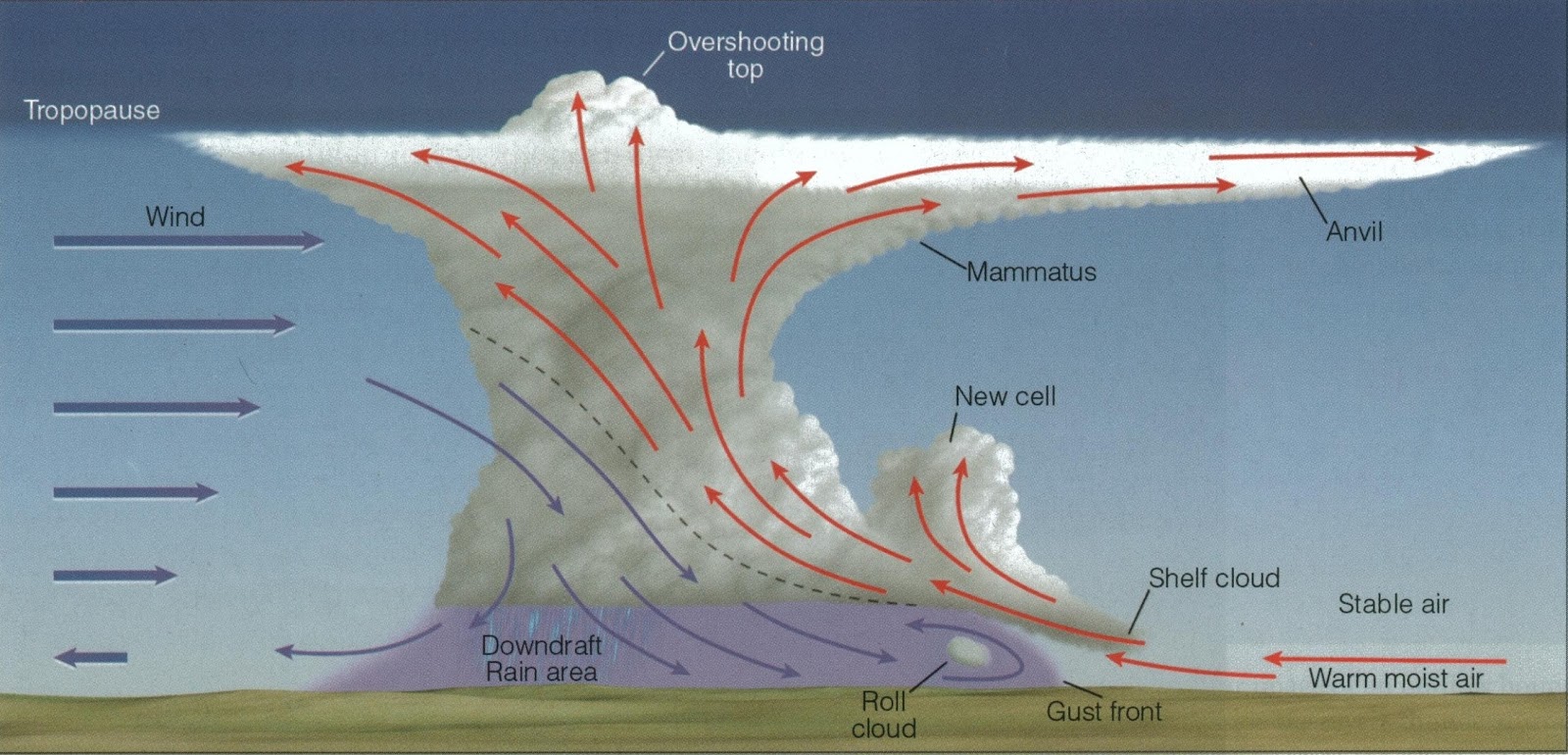
The anvil-shaped summit of a large cumulonimbus cloud, the incus, is an icy canopy that can grow to enormous heights above the main body of the cloud, spreading out laterally as it encounters the tropopause – the atmospheric boundary separating the troposphere from the stratosphere – to create the characteristic flattened thunderhead seen here. It can be smooth in appearance, especially at a distance, but it is usually highly vibrous and striated, composed of billions of ice crystals borne aloft by vigorous upward convection.
An incus is an indication that thunderstorm is in its mature stage, and is therefore capable of:
- Lightning
- Hail
- Strong winds
- Funnel clouds
The incus can sometimes separate itself from the main storm cloud, preceding it by many kilometers, even producing cloud-to-ground lightning in the apparent absence of the main storm cloud, If, as sometimes happens, the main cumulonimbus cloud decays or rains itself out, leaving the anvil behind on its own, the resulting cloud is known as cirrus spissatus cumulonimbogenitus.

Photo: Nicola Magri



0 comments
Write a comment